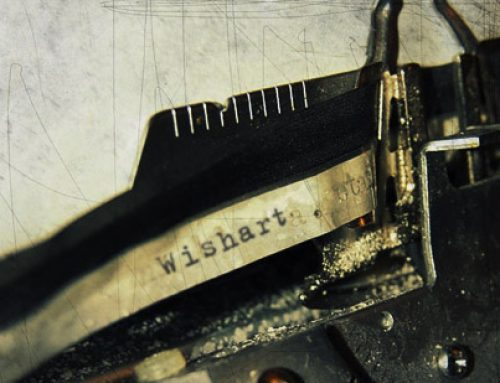With the George Wishart Quincentennial conference occurring this Friday (30th) here’s an article published in the Fife Free Press (23 May 2008) concerning the George Wishart memorial plaque that was damaged by a reversing vehicle:
Third time lucky for St Andrews martyr’s monument
![]() On September 14 last year, the offices of St Andrews Preservation Trust received a mysterious telephone call from Fife Constabulary wondering if they knew anyone called George Wishart. And it was only after a great deal of cross talk and misunderstanding that they discovered the call was about the 16th century Protestant martyr who was burnt in front of St Andrews Castle! The memorial plaque erected by the Trust in memory of Wishart was lying broken outside the castle, and it was assumed that a reversing lorry had caused the damage unlike the first time the memorial was broken, when vandalism was suspected.
On September 14 last year, the offices of St Andrews Preservation Trust received a mysterious telephone call from Fife Constabulary wondering if they knew anyone called George Wishart. And it was only after a great deal of cross talk and misunderstanding that they discovered the call was about the 16th century Protestant martyr who was burnt in front of St Andrews Castle! The memorial plaque erected by the Trust in memory of Wishart was lying broken outside the castle, and it was assumed that a reversing lorry had caused the damage unlike the first time the memorial was broken, when vandalism was suspected.
For the third time, the memorial plaque — repaired by Watson the builder — was put back in place and acknowledged at a brief ceremony on Tuesday.
Among those in attendance were the chair of the Trust, Anne Morris; Dr David Wishart, chairman of the Wishart Society, accompanied by other members, and Maris Cassells from the St Andrews Pilgrim Trust.
Along with the Preservation Trust, both the Pilgrim Trust and the Wishart Society had made generous contributions to the repairs.
George Wishart was one of the most influential Protestant martyrs associated with the Scottish Reformation.
He was condemned for heresy and burnt at the stake on March 1, 1546, by order of Cardinal David Beaton, head of the Catholic Church in Scotland.
The letters GW on the roadway opposite the castle show where his martyrdom occurred.
In a short speech, Dr Wishart spoke of how Cardinal Beaton had watched from the castle ”enjoying the spectacle of Wishart’s martyrdom.”
Dr Wishart said that one of the soldiers responsible for overseeing the burning had taken pity on the condemned man and hung bags of gunpowder under his clothes to speed his end. The gunpowder did explode in the fire but failed to kill Wishart, who perished in the flames.
His death was soon avenged when, on May 26, supporters of Wishart gained entry to the castle, murdered Cardinal Beaton — who was with his mistress — and hung his body from the battlements.
Wishart’s martyrdom is widely regarded as the event which set the Reformation in train in Scotland.

